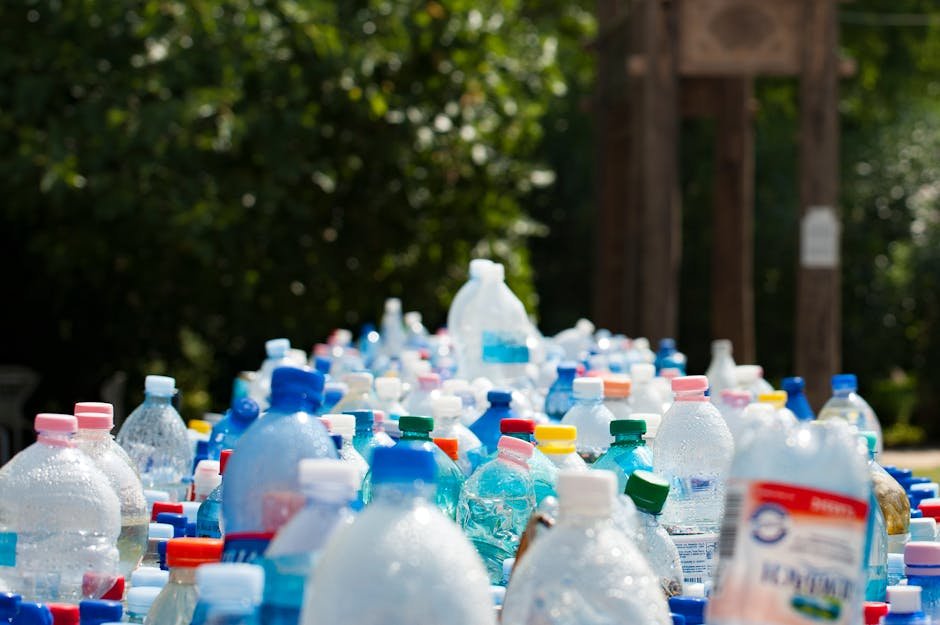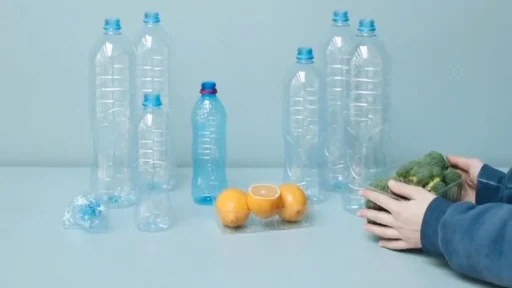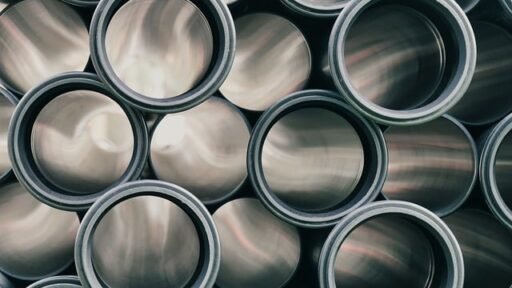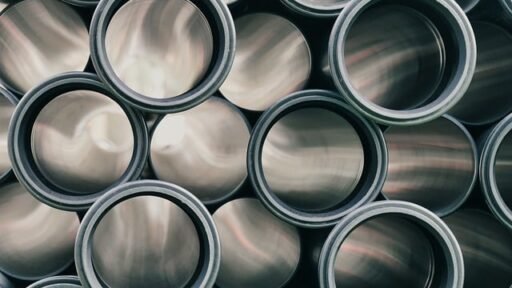-
Table of Contents
- Sustainability Takes Center Stage
- Biodegradable and Compostable Plastics
- Advanced Recycling Technologies
- Smart and Functional Plastics
- Conductive Plastics
- Self-Healing Plastics
- Nanotechnology and Plastics
- Nanocomposites
- Nano-Enabled Smart Packaging
- Bioplastics and Bio-Based Materials
- Improved Performance and Versatility
- Novel Biomass Sources
- Additive Manufacturing and 3D Printing
- Customization and Personalization
- Advanced Materials for 3D Printing
- Regulatory Landscape and Policy Shifts
- Extended Producer Responsibility
- Single-Use Plastic Bans
- Artificial Intelligence and Machine Learning in Plastics
- Accelerated Materials Discovery
- Optimized Manufacturing Processes
- The Circular Economy and Plastics
- Design for Circularity
- Plastic Credits and Offset Programs
- Emerging Markets and Global Shifts
- Growth in Emerging Markets
The Plastic Revolution: Shaping the Future of Industry
As we stand on the cusp of a new era in materials science and manufacturing, the plastics industry is poised for a dramatic transformation. Over the next decade, we can expect to see groundbreaking innovations, shifting consumer preferences, and evolving regulatory landscapes that will reshape the way we produce, use, and think about plastics. This article delves into the key trends and developments that will define the plastics industry from 2023 to 2033, offering insights for young professionals and entrepreneurs looking to navigate this dynamic sector.
Sustainability Takes Center Stage

The plastics industry has long grappled with its environmental impact, but the coming years will see a seismic shift towards sustainability. As consumers become increasingly eco-conscious, companies are racing to develop more environmentally friendly alternatives to traditional plastics.
Biodegradable and Compostable Plastics
One of the most promising areas of development is in biodegradable and compostable plastics. These materials, derived from renewable resources such as corn starch, sugarcane, or even algae, are designed to break down naturally in the environment without leaving harmful residues.
[Image: A colorful array of biodegradable plastic products, including food containers, cutlery, and packaging materials]
Industry leaders are investing heavily in research and development to improve the performance and cost-effectiveness of these materials. By 2033, we can expect biodegradable plastics to capture a significant market share, particularly in single-use applications like food packaging and disposable consumer goods.
Advanced Recycling Technologies
While biodegradable plastics offer a solution for certain applications, the vast majority of plastic products will still require efficient recycling systems. The next decade will see rapid advancements in recycling technologies, including chemical recycling processes that can break down plastics into their molecular components for reuse.
These innovations will enable the creation of a more circular economy for plastics, reducing waste and conserving resources. As recycling becomes more efficient and cost-effective, we’ll likely see a surge in demand for recycled plastics across various industries.
Smart and Functional Plastics
The future of plastics isn’t just about sustainability – it’s also about enhancing functionality and creating “smarter” materials. As we move towards an increasingly connected world, plastics will play a crucial role in enabling new technologies and improving existing products.
Conductive Plastics
One of the most exciting developments in this area is the rise of conductive plastics. These materials combine the versatility and lightweight properties of traditional plastics with the ability to conduct electricity, opening up a world of possibilities for electronic devices and wearable technology.
[Image: A close-up of a flexible, transparent conductive plastic film being used in a touchscreen device]
By 2033, we can expect to see conductive plastics revolutionizing industries such as consumer electronics, automotive, and healthcare. From flexible displays to advanced medical implants, these materials will enable the creation of more durable, lightweight, and energy-efficient products.
Self-Healing Plastics
Another groundbreaking innovation on the horizon is self-healing plastics. These materials are designed to repair themselves when damaged, potentially extending the lifespan of products and reducing waste.
Researchers are exploring various approaches to self-healing, including embedding microcapsules of healing agents within the plastic matrix or developing materials that can reform chemical bonds when exposed to heat or light. As these technologies mature, we can expect to see self-healing plastics used in everything from smartphone screens to automotive components.
Nanotechnology and Plastics
The intersection of nanotechnology and plastics will drive significant advancements in material properties and performance. By manipulating materials at the molecular level, scientists and engineers can create plastics with enhanced strength, durability, and functionality.
Nanocomposites
Nanocomposites, which incorporate nanoparticles into plastic matrices, will become increasingly prevalent in the coming years. These materials can offer improved mechanical properties, better barrier performance, and even antimicrobial capabilities.
For example, nanocomposites could lead to the development of ultra-strong, lightweight materials for aerospace applications or food packaging that extends shelf life while reducing the need for preservatives.
Nano-Enabled Smart Packaging
The integration of nanotechnology into plastic packaging will enable the creation of “smart” packaging solutions that can monitor product freshness, detect contaminants, or even change color to indicate expiration dates.
[Image: A futuristic food package with a color-changing nano-enabled indicator showing freshness levels]
These innovations will not only improve food safety and reduce waste but also enhance the overall consumer experience. By 2033, we can expect smart packaging to become commonplace in supermarkets and households around the world.
Bioplastics and Bio-Based Materials
As concerns about petroleum-based plastics continue to grow, the industry will increasingly turn to renewable, bio-based alternatives. Bioplastics, derived from plant-based sources such as corn, sugarcane, or cellulose, will see significant growth and development over the next decade.
Improved Performance and Versatility
One of the main challenges facing bioplastics has been their limited performance compared to traditional petroleum-based plastics. However, ongoing research and development efforts are rapidly closing this gap.
By 2033, we can expect to see bioplastics that match or even exceed the performance of conventional plastics in terms of strength, durability, and heat resistance. This will enable their use in a wider range of applications, from automotive components to high-performance textiles.
Novel Biomass Sources
The search for new, sustainable sources of biomass for plastic production will intensify in the coming years. Researchers are exploring innovative feedstocks such as algae, agricultural waste, and even carbon dioxide captured from the atmosphere.
These novel biomass sources could help address concerns about competition with food crops and land use, making bioplastics an even more attractive option for environmentally conscious consumers and businesses.
Additive Manufacturing and 3D Printing
The rise of additive manufacturing, particularly 3D printing, will have a profound impact on the plastics industry over the next decade. As 3D printing technologies become more advanced and accessible, we’ll see a shift towards more localized, on-demand production of plastic goods.
Customization and Personalization
3D printing enables unprecedented levels of customization and personalization in plastic products. From custom-fit prosthetics to personalized consumer goods, this technology will empower individuals and businesses to create bespoke plastic items tailored to their specific needs.
[Image: A 3D printer creating a complex, customized plastic product with intricate details]
By 2033, we can expect to see 3D printing kiosks in retail stores, allowing customers to design and print their own products on the spot. This shift towards localized production could disrupt traditional supply chains and manufacturing models.
Advanced Materials for 3D Printing
The development of new plastic materials specifically designed for 3D printing will accelerate in the coming years. These materials will offer improved strength, flexibility, and functionality, expanding the range of applications for additive manufacturing.
From high-performance engineering plastics to biocompatible materials for medical implants, these advanced 3D printing materials will drive innovation across various industries.
Regulatory Landscape and Policy Shifts
The plastics industry will face an increasingly complex regulatory environment over the next decade, as governments and international bodies implement stricter policies to address plastic waste and environmental concerns.
Extended Producer Responsibility
Extended Producer Responsibility (EPR) programs, which make manufacturers responsible for the entire lifecycle of their products, including disposal and recycling, will become more widespread. These policies will incentivize companies to design products with recyclability and sustainability in mind, driving innovation in materials and packaging design.
Single-Use Plastic Bans
The global trend towards banning or restricting single-use plastics will continue to gain momentum. By 2033, we can expect to see comprehensive bans on a wide range of single-use plastic items in many countries, forcing industries to adapt and develop alternative materials and solutions.
Artificial Intelligence and Machine Learning in Plastics
The integration of artificial intelligence (AI) and machine learning (ML) technologies will revolutionize various aspects of the plastics industry, from materials development to manufacturing processes.
Accelerated Materials Discovery
AI and ML algorithms will enable researchers to rapidly screen and predict the properties of new plastic formulations, significantly accelerating the materials discovery process. This could lead to the development of novel plastics with enhanced properties and functionality in a fraction of the time it currently takes.
Optimized Manufacturing Processes
Machine learning algorithms will be increasingly used to optimize plastic manufacturing processes, improving efficiency, reducing waste, and enhancing product quality. From predictive maintenance of equipment to real-time process adjustments, AI will play a crucial role in streamlining plastics production.
The Circular Economy and Plastics
The concept of a circular economy, where materials are continuously reused and recycled rather than discarded, will become increasingly central to the plastics industry over the next decade.
Design for Circularity
Companies will place greater emphasis on designing products and packaging with circularity in mind. This will involve using easily recyclable materials, minimizing the use of additives and mixed materials, and creating products that can be easily disassembled for recycling or reuse.
Plastic Credits and Offset Programs
Similar to carbon offset programs, plastic credit systems may emerge as a way for companies to compensate for their plastic footprint. These programs could fund plastic waste collection and recycling initiatives, particularly in developing countries where waste management infrastructure is lacking.
[Image: A beach cleanup initiative funded by a plastic credit program, with volunteers collecting plastic waste]
Emerging Markets and Global Shifts
The global landscape of plastics production and consumption will continue to evolve over the next decade, with significant implications for the industry.
Growth in Emerging Markets
Emerging economies, particularly in Asia and Africa, will see rapid growth in plastics





